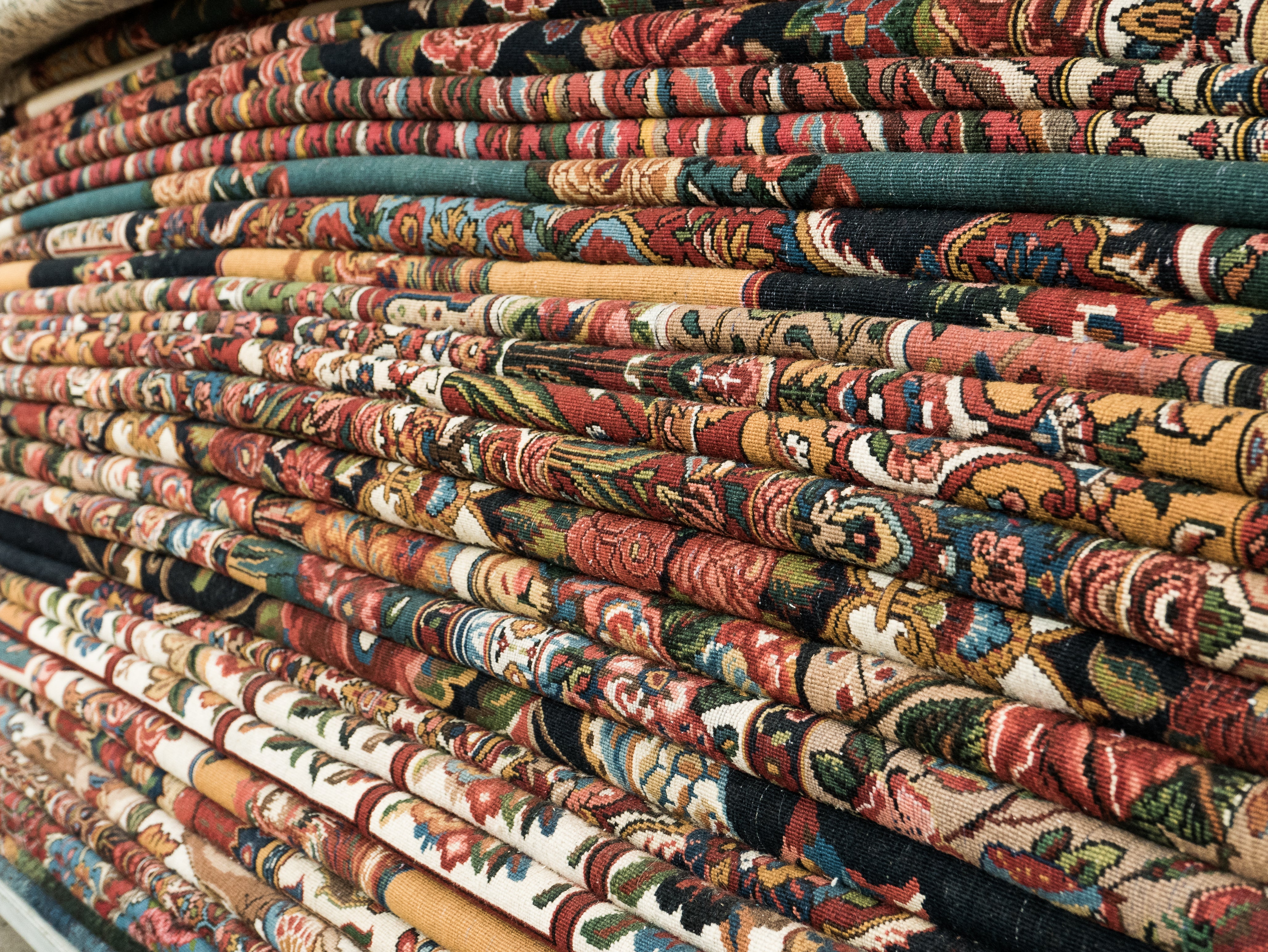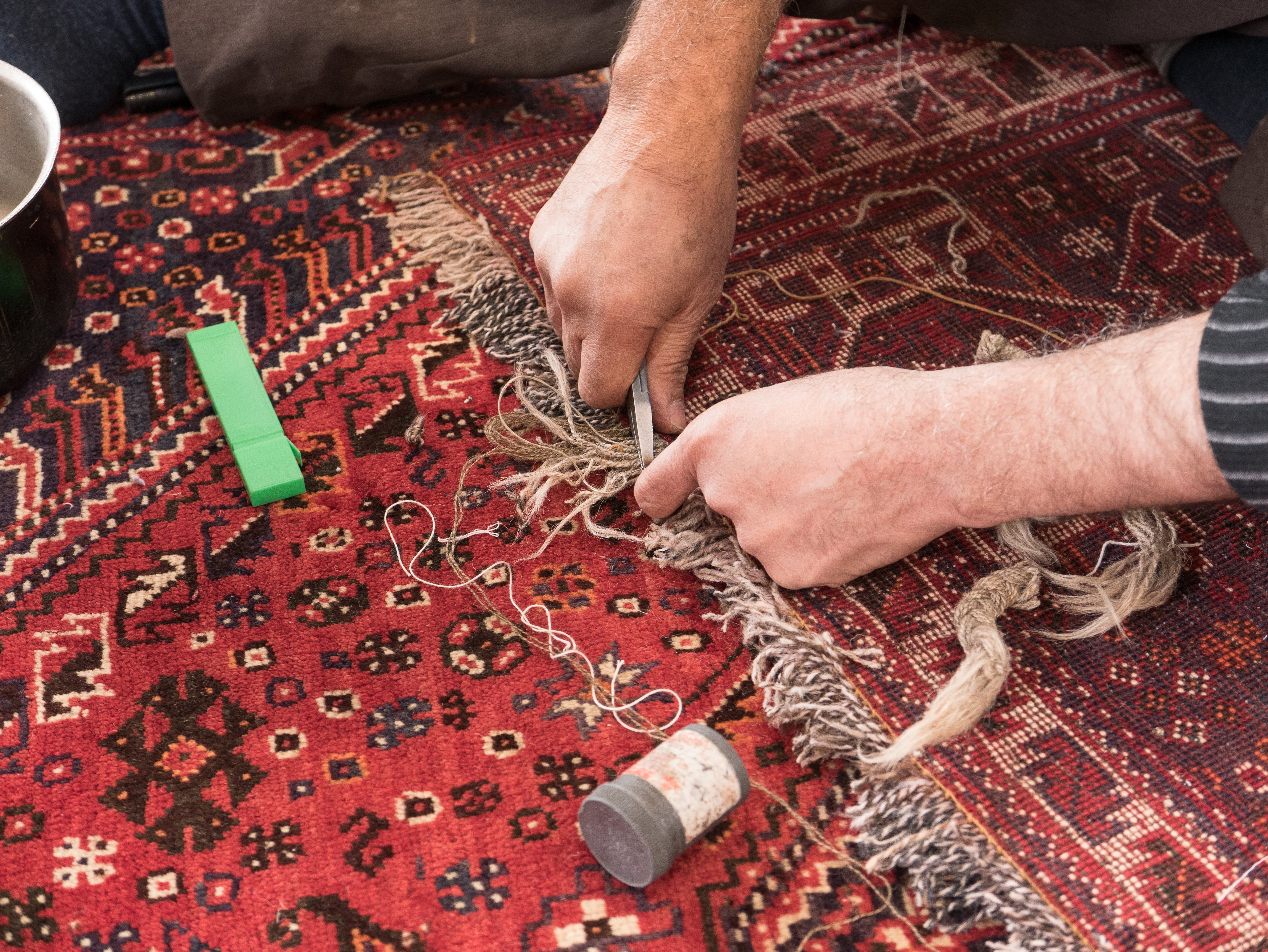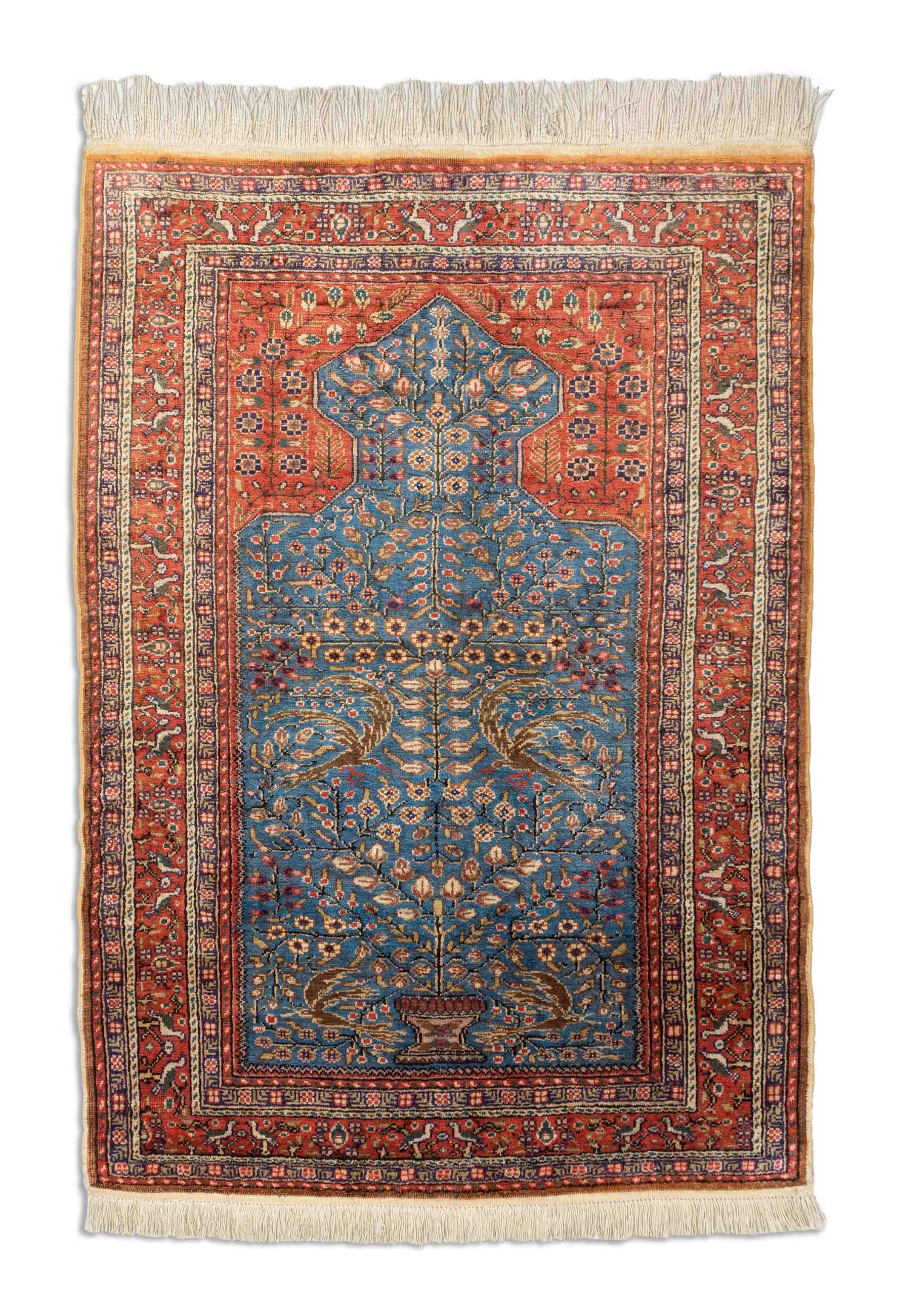
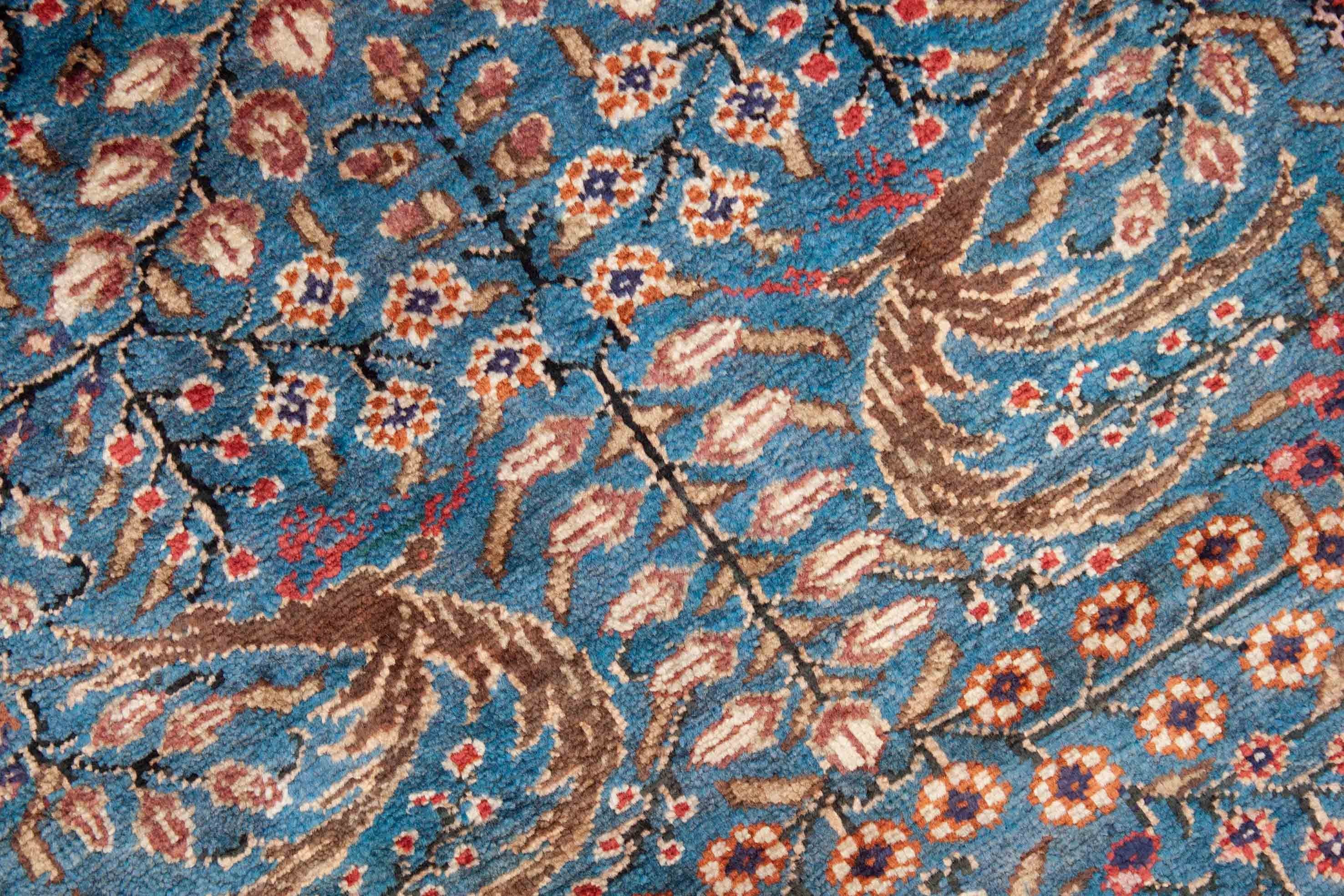
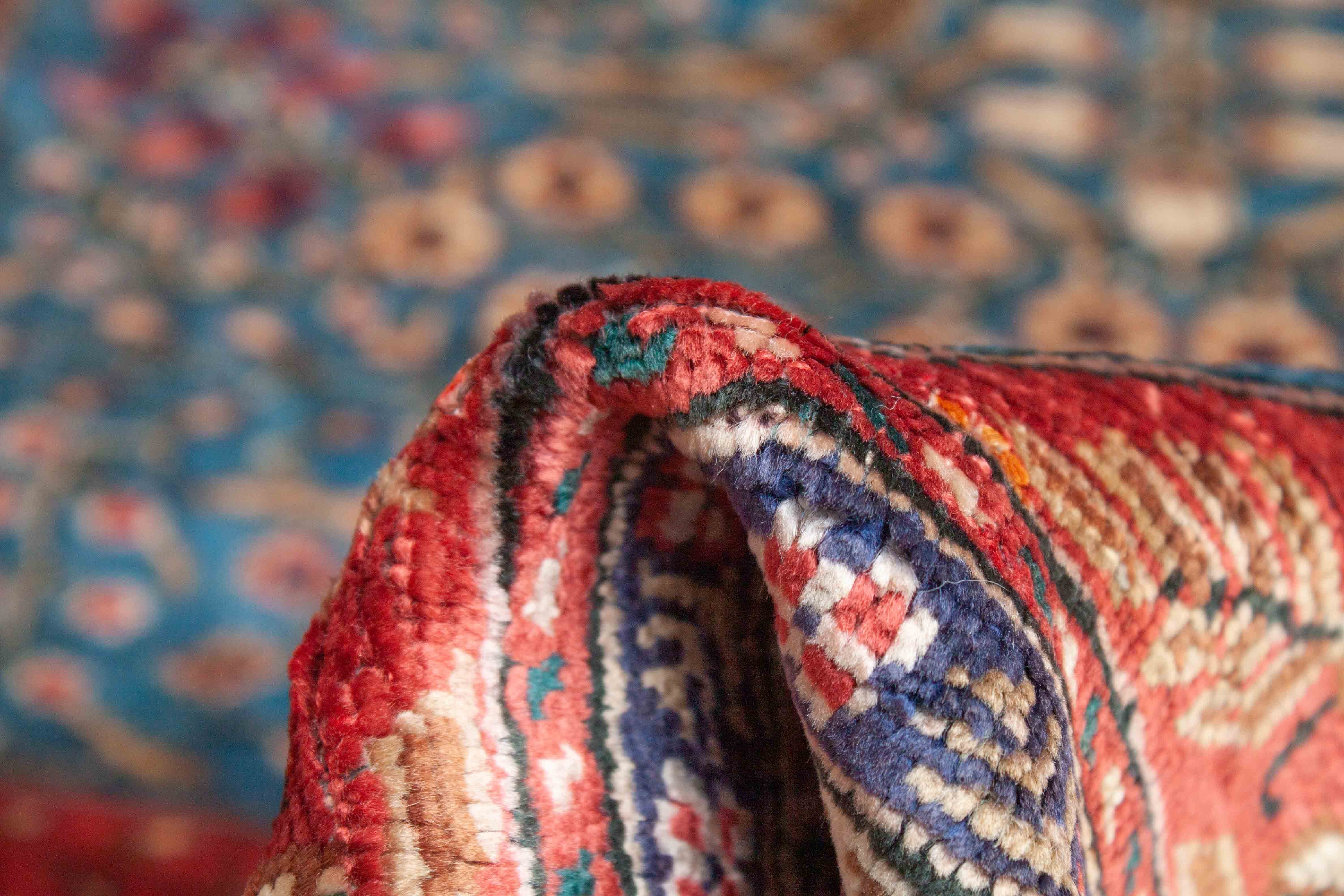


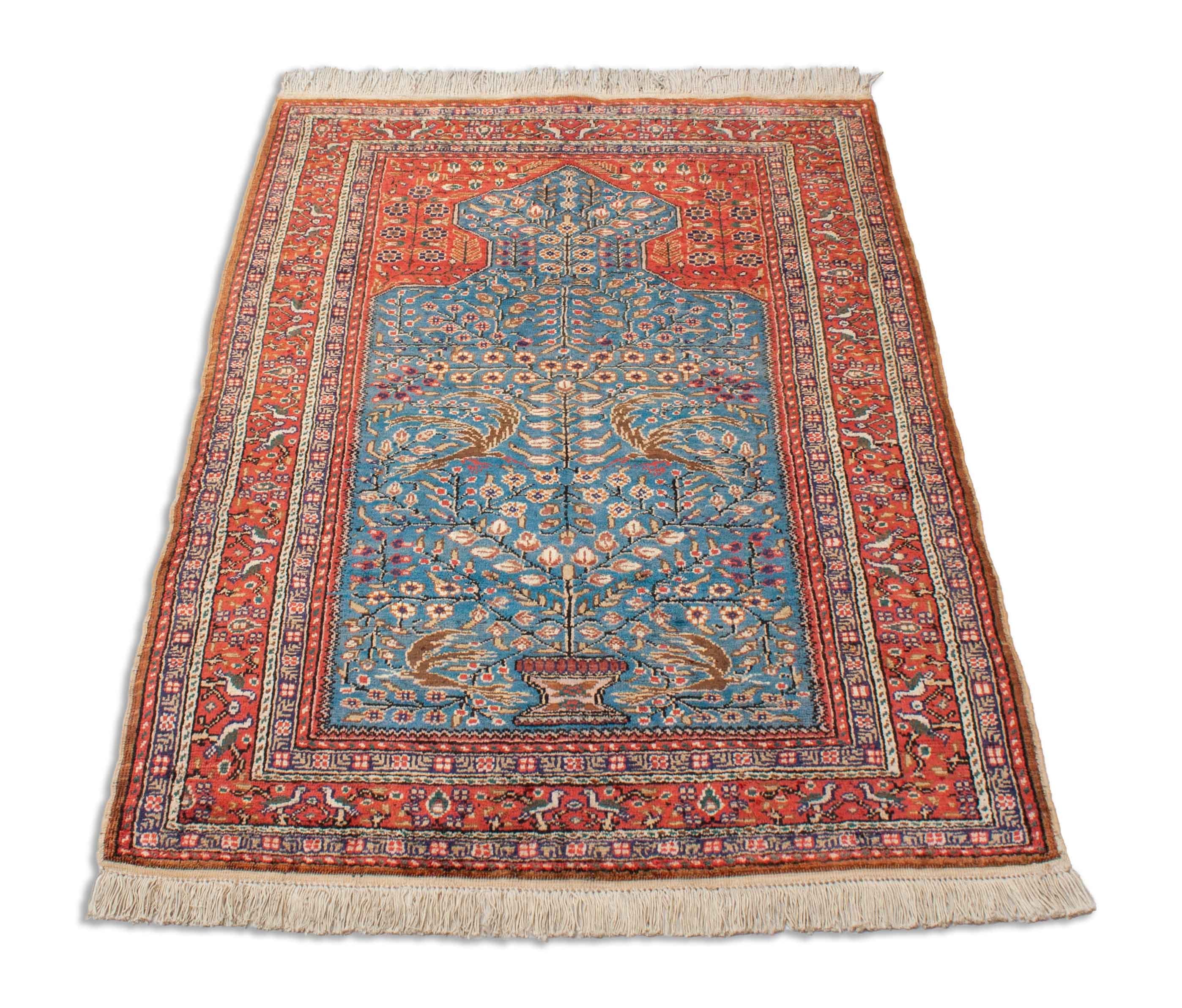
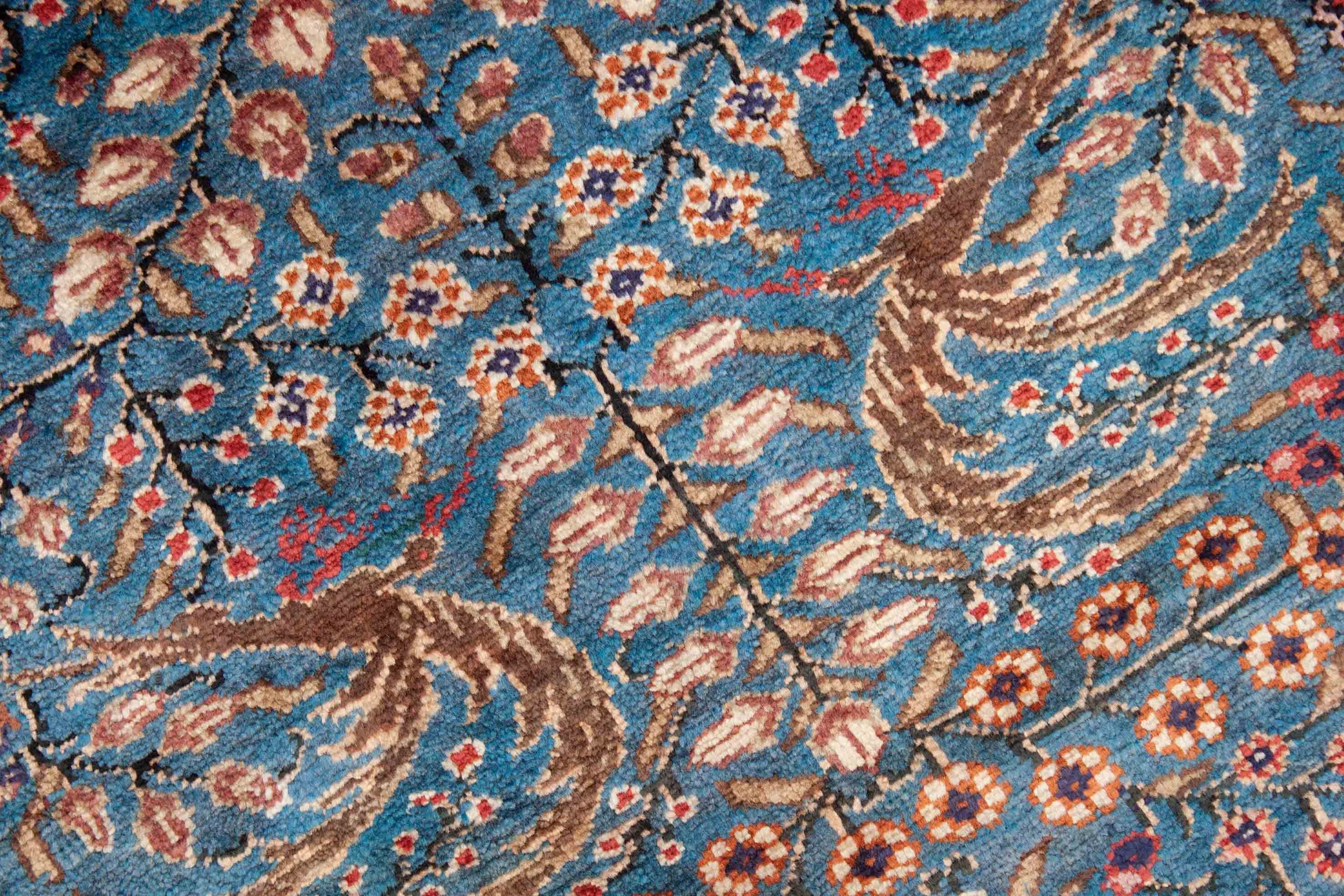
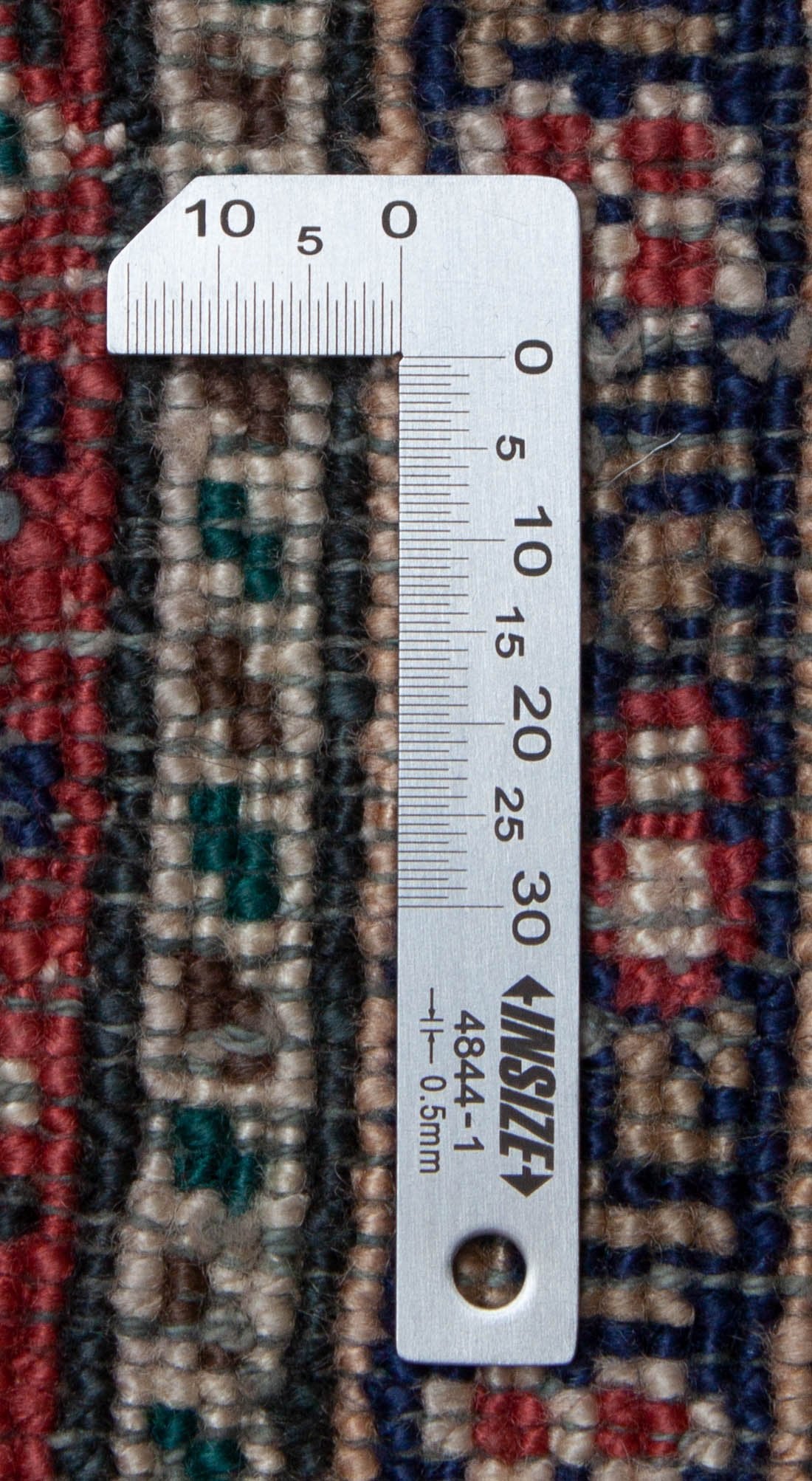
Kayseri from Mercerized Cotton
129 cm x 90 cm
Nr. 18486
Floral Kayseri from Mercerized Cotton, dark red with border
| Place of origin | Türkei |
| Size | 129 cm x 90 cm (= 1.16 qm) |
| Manufacturing | hand knotted |
| Material | Flor: mercerizezed cottonWeft & Warp: cotton |
| Knots/m2 | 250.000 |
| Pile height | 5mm |
| Year of manufacture | 1970 |
| Coloring | dark red, light blue |
| Edition | Single piece |
Place of origin
Kayseri (Latin Caesarea, named in honor of the Roman Emperor Tiberius) is the capital of the homonymous Province of Kayseri in Cappadocia in Turkey. Kayseri rugs (also called Kaiseri rugs) are mostly made of pure silk. They are very valuable and decorative. Kayseri rugs are typically knotted in smaller sizes and used as wall or prayer rugs.
Patterns
The luxuriant flower motifs of this Kayseri are elegant and varied. The graceful vegetative symbols representing flowers, leaves and branches are artfully intertwined.
The edge of the rug is decorated with an edging (border). The border forms a excellent contrast to the center.
This Kayseri is decorated with the so-called Mehrab or Mihrab motif. Mehrab refers to the Islamic prayer niche in mosques, which shows the direction of prayer qibla, i.e. the direction of Mecca. Traditionally, rugs with the Mehrab motif are used by Muslims for prayer and are therefore particularly treasured.
The background of this Kayseri is light blue. The colors dark red and light blue dominate the overall impression. The border features dark red, beige and purplec.
Condition
This Kayseri has a story. It was hand knotted about 1970. It has been thoroughly cleaned and only partially restored condition but is in good condition. We have not completely restored this Kayseri because we think it is as it is a special charm. If you would like, we will of course restore the rug further for you. We can restore almost any rug to an almost perfect condition.
Material
The pile of this Kayseri is made of mercerized cotton. Cotton consists of shiny fibers filled with cell sap. When the cell sap dries after harvesting, the surface of the fiber warps and loses its luster, due to the resulting refraction of light. In the middle of the 19th century, John Mercer invented the process of mercerization. During mercerization, cotton is given a new, higher quality fiber structure through the application of tensile stress in cold concentrated caustic soda lye. Mercerized cotton has shortened fibers with a round cross-section. The refined material does not shrink and is very dimensionally stable. The changed refraction of light gives the fiber a silky sheen. Also, mercerized cotton absorbs color more easily and is much more tear-resistant than virgin cotton. Since mercerization is complex and expensive, only high-quality cotton fibers are refined through it. Because of the silky sheen of the yarn, mercerized cotton, like viscose, is often referred to as "artificial silk". However, the colloquial term "artificial silk" is not permitted under the Textile Labelling Act TKG. The weft and warp threads of this Kayseri are made of cotton. This versatile material is tear-resistant and stretchable and, therefore, ideal for a durable backing fabric.
Hinweis zu den Fotos
Kinderarbeit? Nein Danke.
Choose options








129 cm x 90 cm
Nr. 18486

